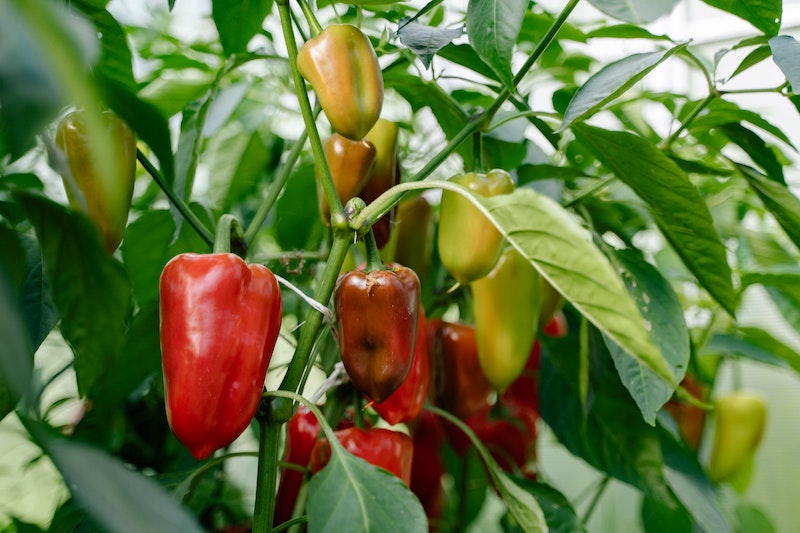Sweet or hot or somewhere in between, peppers offer something to satisfy the tastes of any home gardener. Available as numerous cultivars with diverse growth habits, flavors, and other fruit characteristics like shape and color, peppers are known scientifically as Capsicum annum or C. chinense. Peppers are fairly easy to grow. For a beginner, choosing a suitable cultivar for their location and experience level will ensure success. Consistent moisture, weed control, good site selection and preparation, and fertilizer are keys to a gorgeous harvest of peppers.

Caring For Pepper Plants
Pepper plants like it hot and sunny. The ideal location will receive at least 8 to 10 hours of sunlight daily. Good site preparation often includes working well-rotted compost or manure into the top foot of soil. This will add nutrients and improve drainage. Peppers have a long growing season and require warm temperatures, or 3 to 4 months of frost-free days. Thus, seeds are typically started indoors well ahead of the last frost date and then transplanted outdoors. Good spacing, regular watering, and regular weeding to limit competition are all important aspects of pepper care.
Planting Pepper Plants
In most situations, the best way to grow pepper plants is to start seeds indoors at least 6 to 8 weeks ahead of transplanting, or purchase transplants to go out into the garden after all danger of frost has passed and temperatures are above 55 degrees Fahrenheit at night. Select a site with full sunlight and fertile, well-drained soil like a sandy loam with ample organic matter. Working organic matter like rotted compost into the site prior to planting will encourage plant vigor.
Space plants about 18 to 24 inches apart, depending on the variety. Stagger plants to fit more in an area or keep rows 24 inches apart.

Watering Pepper Plants
Peppers are somewhat drought tolerant but will perform best with regular moisture. These plants have a fairly shallow root system, so they may need more frequent, lighter watering than some other garden crops. As a general rule, peppers require an inch of water through rainfall and supplemental irrigation per week.
Regular moisture is particularly critical during flowering and fruit development. Inadequate water during this time or extreme soil moisture fluctuations can cause flower and immature fruit loss and a phenomenon called blossom-end rot. Apply water to the base of the plant to avoid splashing water on the leaves and encouraging fungal diseases.
Fertilizing Pepper Plants
Pepper plants prefer a soil pH of around 6.5. A soil test before planting is the best way to determine if any amendments are recommended to adjust the pH and to fine-tune fertilizer applications. For example, a soil test may indicate that there is already more than enough phosphorus in the soil for peppers and other plants.
Without a soil test, work a complete, slow-release fertilizer like a 10-10-10 formula at a rate of 2 pounds per 100 square feet prior to planting and rake it in. A second application when fruits begin to appear can be applied as a side-dressing at a rate of 1.5 ounces per plant or as directed by the fertilizer label. Too much or improperly applied fertilizer can cause leaf burn and excessive vegetative growth at the expense of fruit.
Growing Pepper Plants In Pots
Peppers are often excellent candidates for container growing, especially if a cultivar is labeled as “compact” or otherwise for containers. The size of the container and number of plants per pot will vary depending on the growth characteristics of the specific variety of pepper. As a general rule, a 14-inch pot with plenty of drain holes is a good starting point, but compact types may fit three plants in a container this size. Use a high-quality potting mix or blend intended for large containers.
With container peppers, it may be easier to use a water-soluble fertilizer every week or two while watering rather than work a slow-release fertilizer into the soil. Peppers grown in containers may dry out faster than their counterparts in the ground, and thus will require more frequent monitoring and watering.

Harvesting Pepper Plants
Peppers are typically ready for harvest 70 to 85 days following transplant, depending on the cultivar. Some peppers are ready to harvest when they reach mature size and are green, while others are best left to continue to ripen on the plant until they reach a full red or other mature color. This continued ripening will sweeten the pepper or allow it to reach its full heat potential.
When harvesting, cut the stem. Pulling at the pepper can damage the brittle plant stem. Peppers will stay good in the refrigerator for two to three weeks.
 |
Author Angela Ryczkowski - Published 3-13-2023 |
